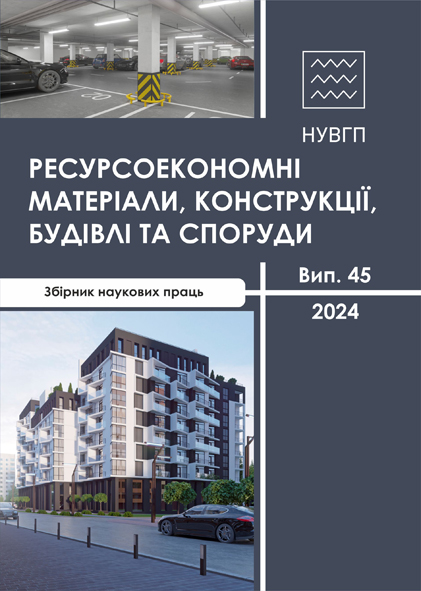EXPERIMENTAL STUDIES OF A SMALL-ELEMENT STEEL FRAMING FLOOR WITH A TWO-LAYER UPPER BELT OF VARIABLE RIGIDITY WITH A SPAN OF 18 M
DOI:
https://doi.org/10.31713/budres.v0i45.22Abstract
One of the ways to reduce the material consumption of steel trusses is the use of initial systems with a minimum number of elements, the concentration of material in the main bearing elements, the use of highly efficient profiles. The researched truss in the form of a sprengel system, which consists of a two-sloped upper belt, a lower broken belt and two risers connecting the belts, can correspond to such design directions. The upper belt in the areas between the support and ridge nodes is a rigid, inseparable rod that receives all three types of internal forces: bending moment M, longitudinal force N and transverse force Q. The main role here is played by the bending moment, the value of which along the belt varies from zero values to certain extreme values. The possibility of using perforated I-beams of constant and variable stiffness in the upper belt has been studied. The characteristic curves of the bending moment in the upper belt and the structural solutions of the rods for each of the given stiffness change schemes are considered. The final proposed constructive solution of the upper belt of the truss with a span of 18 meters in the form of a perforated I-beam of variable height. The permissible range of changes in the values of the bending moment is obtained. A geometric interpretation of the area of possible moment values is established. The method of finding rational parameters of a truss with a perforated upper belt of variable stiffness is described. The regularities of the process of changing internal forces in the upper belt and the dependence between them have been established. Such a combination of the bending moment plot and the cross-section scheme of the original I-beam was obtained, which satisfies all strength and design constraints with the minimum possible weight of the truss. To confirm the theoretical studies, experimental tests of a steel small-element roof truss with a span of 18 m in natural size were carried out.

